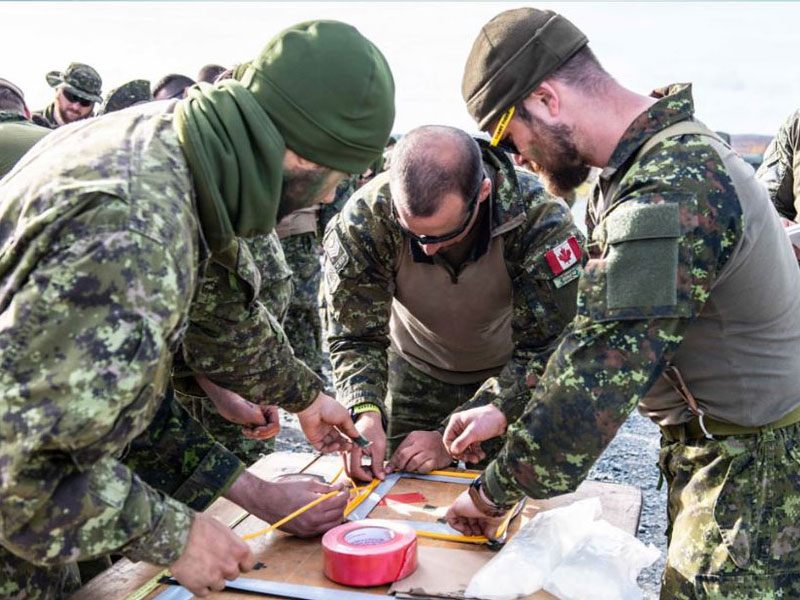4 Engineer Support Regiment (4 ESR) recently showed off their capabilities and had the opportunity to enhance their skills on Exercise NIHILO SAPPER 22 (Ex NS 22) from November 1-10, 2022. Due to the impacts of Hurricane FIONA, Ex NS 22 was reduced in scope to focus primarily on level 3 training.
The role of the military engineers is to allow friendly forces to live, move and fight on the battlefield, while denying the same to the enemy. Training for this role can take many forms; this year, for two weeks in the Gagetown training area, the soldiers of 4 ESR refreshed basic soldier and engineering skills including reconnaissance, bridge demolitions, assault boat training, and camp construction.
“The goal of this training was for our squadrons to conduct level 3 training with general support and field engineering as a backdrop,” said Captain Matthew Murphy, the lead planner for Ex NS 22. “We completed squadron-level tasks, including the construction of key camp infrastructure, to train the skills we need to be able live, move and fight, often in an austere environment. 45 Support Squadron focused on a camp build, while 42 Field Squadron focused on core combat engineering and soldier skills.”
“On Ex NS 22, we practiced constructing the infrastructure for a camp, which would be critical to deploying members of the Canadian Armed Forces to a new theatre of operations,” said Captain Daniel Portelli, the Officer Commanding 45 Support Squadron. “We practiced providing the troops with power, accommodations, ablutions, laundry, and showers. Ex NS 22 provides 4 ESR the ability to practice the skills that are necessary to allow the Canadian Army to move into or out of just about anywhere.”
42 Field Squadron (Fd Sqn) also exercised core combat engineering skills. “While living out of a camp does have its benefits, it’s not always possible in the forward edge of a battle area,” explained Captain James Ryan, the Officer Commanding 42 Fd Sqn. “To prepare for operating in a non-permissive environment our squadron lived in austere conditions; we were eating, sleeping and working out of the back of our armoured vehicles, frequently relocating to new locations. We conducted multiple small arms and demolition ranges, refreshing our soldiers on complex demolitions, conventional munitions disposal and tactical explosive breaching before transitioning into exercising these skills within a tactical scenario,” concluded Capt Ryan.
Nestled in the home of the army, the massive Gagetown training area is certainly austere, and it provided Canadian engineers with an excellent stage to rehearse and practice engineering tasks until proficiency is achieved. Now that the limitations of the COVID-19 environment are slowly receding, Ex NS 22 presented 4 ESR with the opportunity to train as a cohesive unit and prepare for a time when their suite of skills are required on international operations.

